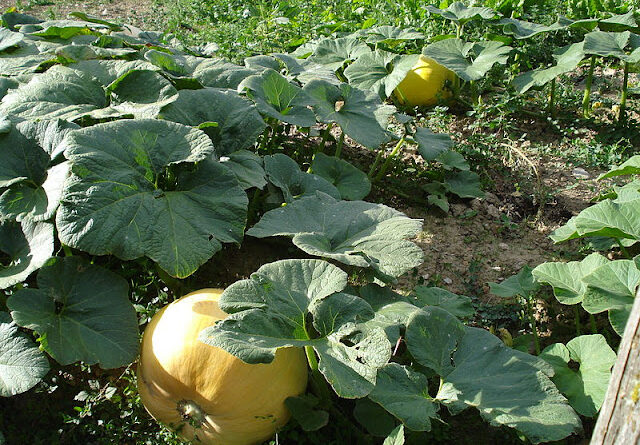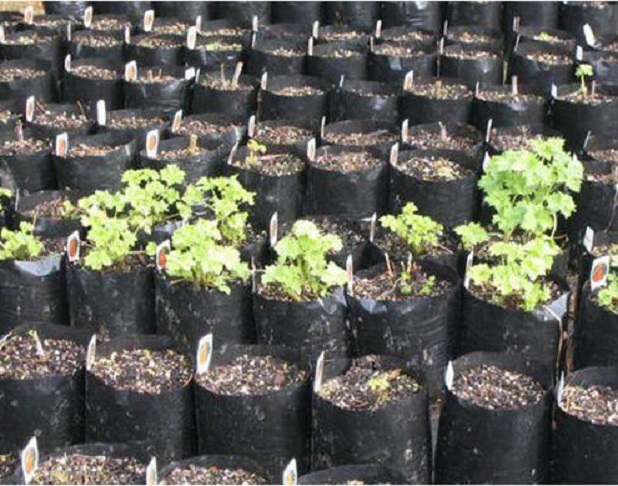Sowing, Transplanting, and Care of Vine crops
Sowing, Transplanting and Care of Vine Crops (Adapted for Annual Cucubits Viz; Cucumber, Gourds, Melons, Pumpkin, and Squashes)
Most of the cucurbits are monoecious and annual inhabit, barring a few exceptions. Almost all require a warm climate, well-drained loam to sandy loam, or sandy soil with an adequate amount of organic matter incorporated in the soil. Most grow vigorously on the ground, however, few like bottle gourd, bitter gourd, snake gourd, sponge gourd, ridge gourd, etc respond well to training on ‘bowers’ (a shady, leafy shelter) made of bamboos and sticks or ‘arbour”pargola’ system. This helps escape the fruits from direct contact with wet soil which causes fruit rotting.
The growth and development of hanging fruits enable the produce to command a premium in the market. Higher yields can be obtained from cucurbitaceous crops by harvesting at regular and frequent intervals. Low humidity, poor soil fertility, high temperature, and longer day light induce maleness thus low productivity in most gourds. However, cloudiness favours early appearance of pistillate flowers at lower nodes in Ash/Wax gourd and pumpkin (Cucurbita moschata). As an exception, in dry atmosphere, flower initiation usually advances and male: female sex ratio is reduced in Winter Squash (Cucurbita maxima). Pre-soaking of seeds especially those of bitter gourd, muskmelon in luke-warm water for 24 hours is beneficial. Soaked seeds are kept in a wet thick cotton cloth/jute bag/woolen blanket in a warm place for 2-4 days. This results in softening and rupturing of hard seed coat for rapid germination. A pH value of 5.5 – 6.8 barring a few exceptions is good for most cucurbits.
techniques and practical experience.
Select a well-drained, leveled plot for the cultivation, having a gentle slope of 0.25 to 0.50% on one side. 200-300 quintals per hectare of well rotten farmyard manure (FYM) or compost is uniformly spread and the field is worked to a fine tilth. Remove all the weeds and stubs of the previous crop. Approx. 40-50 centimeter wide furrows are dug 10-15 centimeters deep with the slope of the field at 150-200 centimeters. This would ensure the drainage of excess water during the monsoon. Thus raised beds is prepared. Level the beds using spades or by a tractor-mounted rotovator.
circular pits measuring 60 cms X 45 cms are then dug 15 cms deep adjoining the furrows at 60-90 cms centre to centre of each pit and left upon for about 3-4 days. Then each pit is filled completely with a mixture of 3-5 kilograms of well-rotten farmyard manure (FYM) and soil in 50-50 ratio along with a fertilizer mix of 150-200 grams (Ammonium Sulphate /Calcium-ammonium Nitrate or 30-40 grams Urea, 40-50 grams Single Super Phosphate and 80-100 grams Muriate of Potash). The pits are then left unattended for about 15 days. Circular basins are then formed by hand-hoe or a trowel removing all soil lumps and pebbles. Normally, 2-3 seeds are sown, at an average recommended depth of seed sowing between 1.0 to 2.5 centimeter, in each basin on the furrow side and covered with fine sieved farmyard manure or compost.
This method is now becoming popular with most vegetable growers around the country. A significant advantage of this system is that such crop is not unnecessarily exposed to the vagaries of nature, frost, and various diseases and insect pests. Transplanted crops bear early since the seedlings are already well developed at the planting time. Extra care should, however, be taken not to disturb the delicate root system of vine crops while transplanting otherwise the transplants would fail to establish. Since the nursery area is compact, the grower spends less time, energy, and revenue inspecting /maintaining the crop. Since most cucurbitaceous seeds have a sweet kernel, this being a favorite food of ants, white-ants, and rodents like field-rats, mice, squirrels etc, and some birds are quietly removed, leaving the field with low crop density and smaller harvest to the grower. Raising nursery thus has a definite advantage.
Select a proper site for the nursery as described under ‘Raising of seedlings and nursery care’ (Refer to previous post) Use 40-50 micron, 10 -12 cms long and 7-8 cms wide polyethylene bags for sowing Using same soil mix as stated for cole crops and fruit vegetable, fill the bags leaving 1.0 centimeter on top Since cucurbits do not survive under excess water, ensure that the polyethylene bags are punctured or cut at places with a blade to drain Cluster the bags in rows with wooden batons




